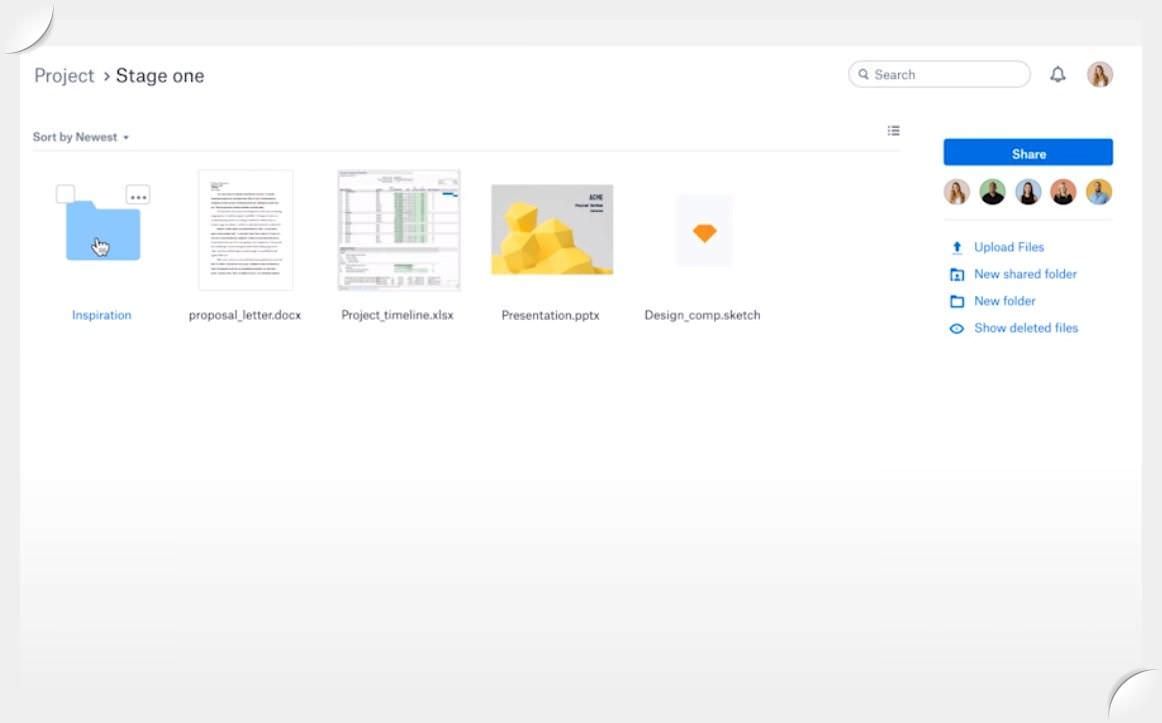14 Best Free Methods for Digital File Transfer
In today’s digital era, people frequently share data with friends, colleagues, or even the broader online community. Beyond social networks, data is often shared as files on the internet. So, which methods can you use to share files digitally?
The answer: There’s a plethora of options to choose from.
But then, which method is the most effective for sharing files?
The answer: It truly varies based on individual preferences and specific needs.
For instance, if you have a large file to share, or you wish to share a file anonymously, each scenario has its unique solution. There isn’t a one-size-fits-all answer, but there are many methods tailored for different sharing needs.
In this article, I’ll guide you through the top online file-sharing options available today. Ready to dive in? Let’s get started.
Traditional Methods
First, let’s explore traditional file-sharing methods. While these methods might have certain limitations, they remain popular and are often used.
Email is arguably the most widely used file-sharing method globally. Users can send messages and share files as attachments to one or more recipients. It’s both convenient and free – especially with free email service providers such as Gmail, Outlook, Yahoo! Mail, and others.

However, email providers often set limits on attachment sizes. For instance, both Gmail and Yahoo! Mail have a 25 MB limit on attachments, whereas Outlook allows up to 200 attachments in one email, with each not exceeding 50 MB.
Related posts:
- 20 Sites to Send Anonymous Emails
- 18 Tools to Enhance Your Gmail Experience
- Gmail Security Tips & Best Practices
- Gmail Advanced Search: Comprehensive Guide
- 19 Google Apps Scripts Tailored for Gmail Power Users
FTP
File Transfer Protocol (FTP) offers a budget-friendly but slightly technical method to share files. It’s a traditional approach to transfer large files across computers on a network. To facilitate this, you’d need an FTP client such as Cyberduck, FileZilla, or WinSCP.
While FTP doesn’t impose specific limits, it’s contingent on the client’s or server’s storage capacity. However, it’s worth noting that FTP lacks encryption, making it susceptible to cyber threats. To counter this, it’s advisable to use SFTP (Secure FTP) which encrypts data during transmission, thereby enhancing security.
10 Best Free FTP Clients for Desktop
FTP (File Transfer Protocol) and SFTP (Secure File Transfer Protocol) are standard network protocols used for transferring large... Read more
LAN-based Solutions
File sharing within a local network, such as LAN and Wi-Fi, has always been a convenient choice for many. Technologies like Bluetooth and NFC further expand this convenience. I appreciate these methods because they offer swift transfers without the need for wired connections, provided the devices are in close proximity.
AirDrop
AirDrop is an innovative file-sharing solution developed by Apple, tailored for Macs, iPhones, and iPads. Operating via Wi-Fi and Bluetooth, it facilitates speedy file transfers between macOS or iOS devices, particularly over Wi-Fi. The versatility of AirDrop allows it to support virtually any file size, as long as the receiving device has adequate storage.

A noteworthy feature of AirDrop is its emphasis on security. It encrypts files during transmission and establishes a protective firewall around its generated hotspot when operating via Wi-Fi. However, its limitation is its exclusivity to Apple devices.
SHAREit
Endorsed by Lenovo, SHAREit stands as a robust alternative to AirDrop, boasting compatibility with major platforms. Designed to detect and transfer a vast array of file types across computers, smartphones, and tablets, SHAREit employs Wi-Fi technology (like Wi-Fi Direct or a hotspot) for its transfers.
Fast and secure, SHAREit operates independently of an internet connection, akin to AirDrop. Its prowess enables it to handle file sizes as large as those supported by the destination device. However, its Achilles’ heel lies in its incompatibility with Linux or UNIX operating systems.
Cloud Storage Solutions
Cloud storage services are always accessible solutions that provide storage on remote servers via the Internet. They offer the same functionality as FTP but are more user-friendly. With an intuitive interface, users can easily access their data. Furthermore, cloud storage is an invaluable tool for backing up essential files.
Dropbox
Dropbox stands as a user-friendly and dependable file hosting service, offering cloud storage, file synchronization, and compatibility across multiple platforms. With Dropbox, users can easily upload files and generate shareable links, which can be sent to anyone. For enhanced security, these links can be password-protected and set with an expiration date.

On the basic edition, Dropbox grants users 2 GB of complimentary storage space. This can be filled with one or several files, as long as the total size doesn’t exceed 2 GB. For those looking to handle files beyond this limit, there are techniques to acquire additional free storage on Dropbox.
More info:
- Free Plan: Yes, with 2 GB storage space.
- Paid Plan: Starting at $9.99/month for 1 TB storage.
- File Size Limit: 50 GB, but within the user’s available storage limit.
Related posts:
Google Drive
Google Drive stands out as one of the leading cloud storage services, primarily because it’s supported by Google. It provides 15 GB of complimentary storage space, enabling users to store and distribute files totaling up to 15 GB.
Users can share countless files and directories through Google Drive or produce a public link for broad access. However, Google Drive lacks features like link expiration dates or password protection, unlike Dropbox.
More info:
- Free Plan: Yes, with 15 GB storage capacity.
- Paid Plan: Starting at $1.99/month for 100 GB.
- File Size Limit: 5 TB, within the user’s available storage limit.
iCloud Drive
iCloud Drive, Apple’s cloud storage solution, offers access and sharing capabilities similar to Google Drive. Its free version permits users to store files summing up to 5 GB.

Like Google Drive, iCloud Drive enables file sharing either by inviting individuals or by generating public shareable links. However, it doesn’t provide options to set an expiration date or password-protect shared links, similar to Dropbox’s limitations.
More info:
- Free Plan: Yes, with 5 GB storage capacity.
- Paid Plan: Starting at $0.99/month for 50 GB.
- File Size Limit: 50 GB, within the user’s available storage limit.
Microsoft OneDrive
OneDrive by Microsoft ranks alongside the aforementioned services as a favored cloud storage platform. It provides a free storage capacity of 5 GB, akin to iCloud Drive, but has a maximum file size restriction of 2 GB.
Users have the choice to share specific files by sending its public link or granting access solely to selected individuals. However, OneDrive, like its counterparts, does not offer link expiration or password protection features, distinguishing it from Dropbox.
Cloud Storage Comparison: iCloud, Google Drive, OneDrive and Dropbox
Breakdown of the best cloud storage services so far, respectively Google Drive, OneDrive, Dropbox and iCloud. Read more
More info:
- Free Plan: Yes, with 5 GB storage capacity.
- Paid Plan: Starting at $1.99/month for 50 GB.
- File Size Limit: 10 GB, within the user’s available storage limit.
File Sharing Sites
While cloud storage services often necessitate user login to share files, there are more streamlined solutions available: file-sharing platforms that eliminate the need for user accounts. These platforms allow users to simply access the site, upload their desired file, and promptly generate a shareable link.
UploadFiles
UploadFiles stands out as a swift, no-cost file-sharing solution which sidesteps the registration process. Files shared here undergo encryption during transfer, ensuring a high level of security from the user’s browser to the service’s servers.

This platform supports the sharing of files up to 5 GB in size. Sharing functions similarly to Dropcanvas, where users are furnished with a shareable link to distribute their files.
15 Websites to Send Big Files Online
To send big files online, especially those with extremely large file sizes, these are the websites and services... Read more
More info:
- Free Plan: Yes, offering 2 GB of storage capacity.
- Paid Plan: Initiating at $5/month for 100 GB.
- File Size Limit: 5 GB for the free version, and 10 GB for the initial paid tier, within the constraints of available storage.
WeTransfer
WeTransfer enjoys a reputation as a widely recognized cloud-supported file transfer platform. Like its counterparts, users upload their desired files to its servers and then share them by sending the corresponding link to the intended recipient(s). In addition, the service ensures encrypted transfers, similar to UploadFiles, and permits users to share files up to 2 GB without any charges.
More info:
- Free Plan: Available, though it does not provide any storage capacity.
- Paid Plan: Commences at $12/month for 100 GB.
- File Size Limit: 2 GB for the free version and 20 GB for the paid version.
Send Anywhere
Send Anywhere is another online file-sharing solution, designed specifically to securely transmit and share larger files, accommodating files up to 10 GB. Unique to the platform, users can conduct real-time file transfers to a specific device using a 6-digit key.

Besides the real-time transfers, users can generate shareable links, facilitating file sharing with an unlimited number of recipients. An additional feature includes link expiration after 48 hours. Notably, once these links expire, the service ensures that no residual copies of the user’s files remain on its servers.
More info:
- Free Plan: Yes, providing 10 GB of storage capacity.
- Paid Plan: Beginning at $5.99/month for 1 TB.
- File Size Limit: 50 GB, subject to available storage constraints.
Peer-to-Peer File Sharing Tools
Peer-to-peer technology, the powerhouse behind torrents, stands out for its ability to facilitate file transfers without relying on a central server. It forms a direct link between two devices, enabling data transmission in real time. The system is versatile, allowing the transfer of both minuscule and voluminous files. However, it’s crucial for both devices to be concurrently online.
Reep.io
Reep.io introduces a secure, web-oriented peer-to-peer method to transfer files directly between two browsers. Notably, it achieves this without storing any data on servers. The platform’s capabilities extend to image previews and even video streaming, a feature powered by WebRTC that is surprisingly impressive.

Reep.io is freely accessible, allowing users to transmit files of any size or quantity. Like Dropbox, it also offers the convenience of password-protecting shareable links.
Resilio Sync
Resilio Sync provides a solution that circumvents the cloud, encrypting files and creating a direct peer-to-peer connection for their transfer. It ensures the files’ integrity by hashing them and then produces a link (complemented by a QR code) that remains active for three days.
While Resilio Sync specializes in single-use and one-directional file transfers, it does come with a limitation: any modification to a shared file breaks the transfer link, and the changes aren’t synchronized. This can be a setback in certain scenarios, but it also acts as a defense against man-in-the-middle attacks, ensuring that the received file is exactly as intended by the sender.
JustBeamIt
JustBeamIt joins the ranks as another online peer-to-peer transfer tool, requiring no formal registration. Users can easily generate a link for files they intend to share, but it’s imperative to keep the browser active during the transfer.

With JustBeamIt, there’s a liberating absence of restrictions on file size or quantity. However, its shareable links come with a catch-they remain valid for a mere ten minutes. If a link expires, users have the option to regenerate a new download link for the same file.
While many might be familiar with or have experience using some (or possibly all) of these tools, the intention behind curating this comprehensive list is to highlight the most renowned and freely accessible file sharing methods available.